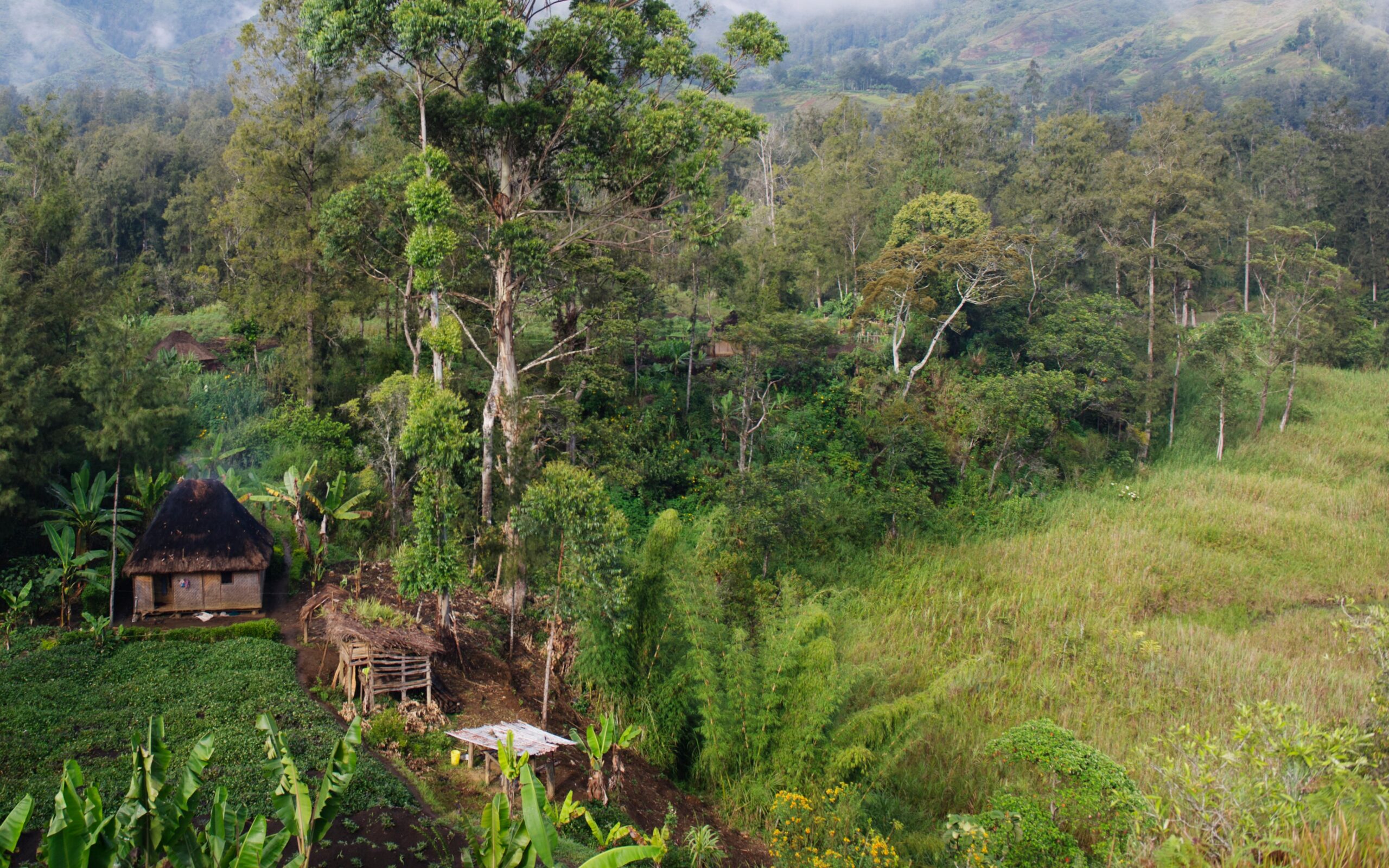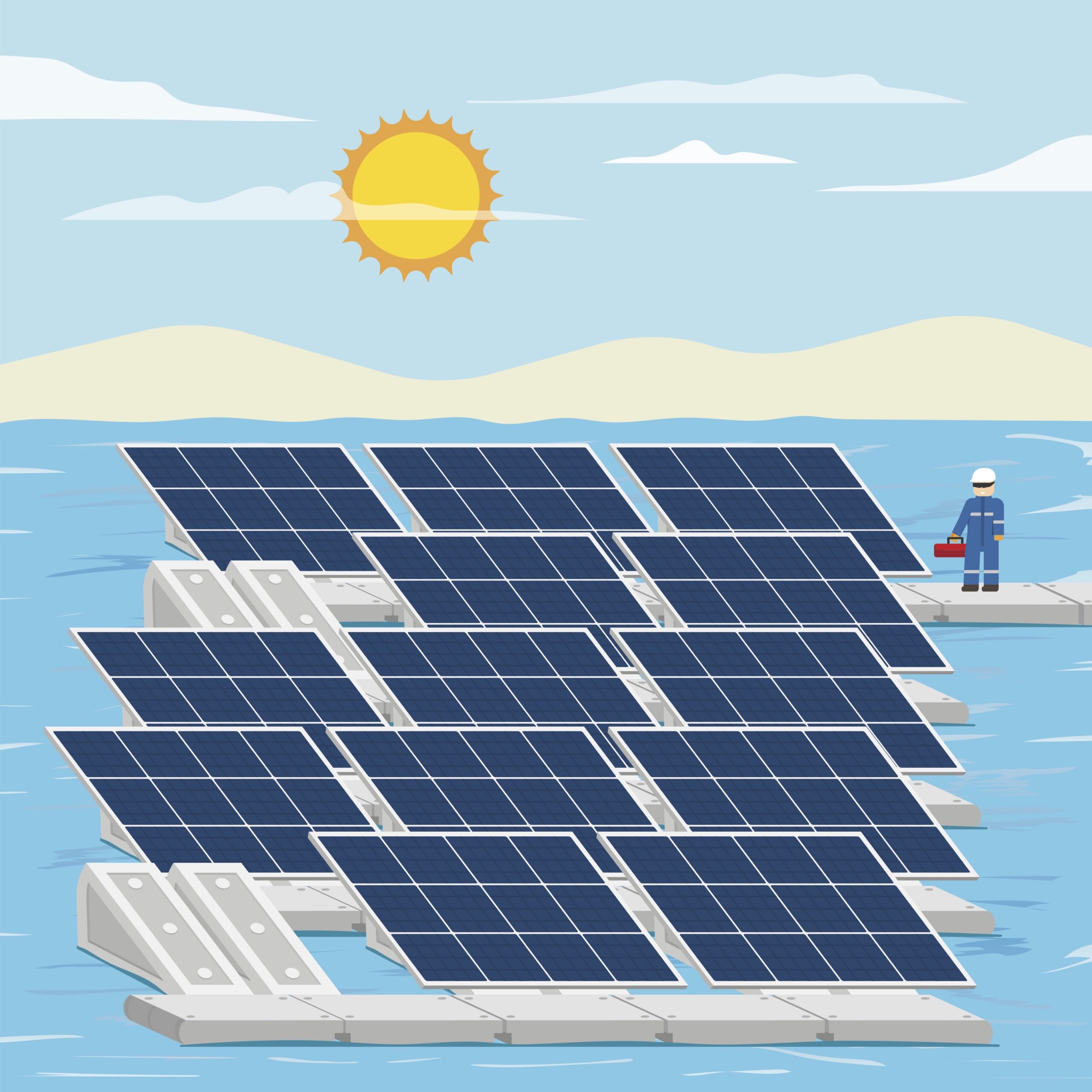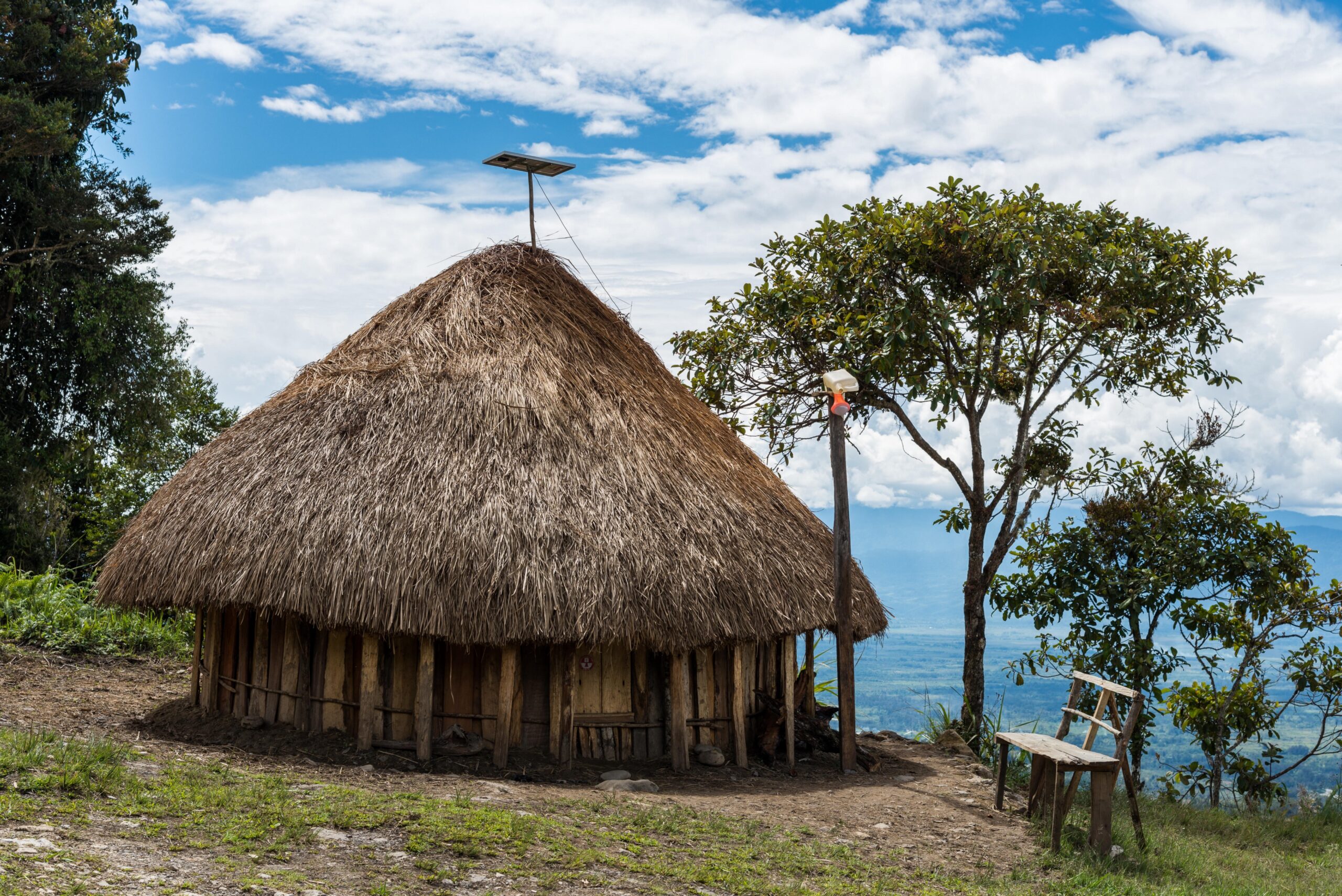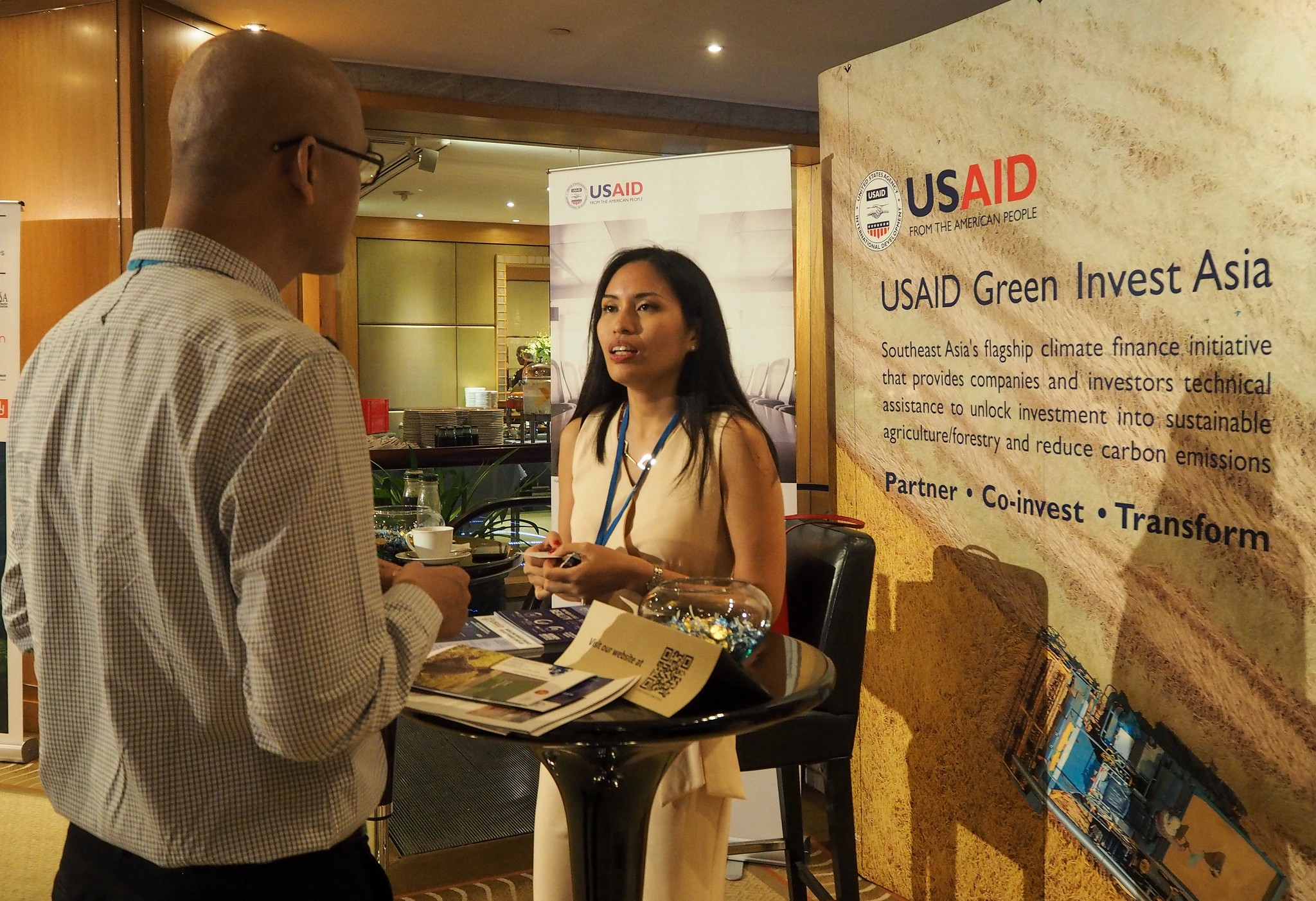<< Back to Media
A Case for Low-Cost, Renewable Green Energy to Power Up Papua New Guinea
February 24, 2020
A Case for Low-Cost, Renewable Green Energy to Power Up Papua New Guinea
Papua New Guinea has one of the world’s highest rates of electrification poverty — just 13 percent of its population has access to power. That’s why in 2010, the government of Papua New Guinea (PNG) made access to reliable, affordable, and modern clean energy sources to more than 70 percent of households by 2030, the heart of its Development Strategic Plan. Reaching the targets in all the other development sectors (e.g., economic prosperity, education, health, jobs) rests on its citizen’s ability to access electricity.
However, how PNG delivers power to its populace is equally essential to the island nation. The Development Strategic Plan adheres to PNG’s national policy, Vision 2050, which calls for carbon neutrality by 2050. Additionally, renewable energy to mitigate climate change is PNG’s new National Energy Policy 2018–2028 main focus. The Pacific islands are suffering the negative impacts of global warming including violent storms, intensive droughts, rising sea levels, and depleted fisheries.
Here’s the conundrum for PNG: maintaining the careful balance of developing a clean, renewable energy sector while pursuing economic prosperity. The next steps for PNG have never been at a more critical juncture. The government must decide which international development partners will best support its energy policies while protecting the fragile island nation for future generations. The stakes are high.
At the heart of what PNG and its energy development partners must consider include these unique facts.
Papua New Guinea is one of the world’s most expensive places to generate electricity. However, the country is also among the world’s sunniest, with 300 days of sunshine a year. These two facts alone make a strong case for more investment in low-cost solar energy.
The 13 percent of Papua New Guineans who already have access to electricity live in urban centers and are connected to a grid. But 80 percent of the country’s 8.2 million people live in remote, rugged mountain terrain with very little infrastructure. Getting them on a national grid would be an enormously complicated, environmentally destructive, and expensive.

House and crops in the Western Highlands, Papua New Guinea, August 2011
Most of the island nation’s households rely on subsistence agriculture. As a result, Papua New Guineans count themselves among the world’s most vulnerable to extreme weather events exacerbated by a rapidly changing climate, including droughts, floods, and landslides, which can lead to food insecurity. Other major social, cultural, economic, and environmental threats to the country and its rich biodiversity include rapid deforestation, forest degradation, illegal fishing, and industrial pollution.
To complicate matters further, subsistence farmers carry out around 46 percent of the deforestation in PNG for lighting and cooking fuel — activities that solar technology can end. Tropical forests cover more than 77 percent of PNG and represent the third largest intact tropical forest in the world when taken together with the forest of West Papua. Deforestation accounts for 17 percent of annual greenhouse gas emissions worldwide, with tropical forest deforestation accounting for half of that percentage.
Most of PNG’s denuded forests, though, result from export logging. According to Global Witness, over 70 percent of PNG’s logging operations are illegal and violate community land rights. At least 85 percent of the PNG’s tropical logs are exported to China, where they are processed and exported as finished lumber products.
Armed with these facts, the government of PNG should choose the right international development partners to develop projects that view economic and energy targets as interdependent with strong environmental protections. To achieve this delicate balance, the private sector—with public support—can deliver technologically advanced, low-cost, renewable energy solutions to meet PNG’s target of providing access to clean, reliable, and affordable energy to 70 percent of its population by 2030.
The Pros and Cons of PNG’s Current Energy Mix
Papua New Guinea’s state-owned electricity utility, PNG Power Limited (PPL), generates and distributes power to the country’s urban consumers and adjacent communities wherever possible. Currently, the island nation has about 580 megawatts (MW) of installed generation capacity. According to a recent World Bank report, PNG must increase its generation capacity by 300 MW by 2030 to meet its energy goals. PPL manages about half of the installed generation capacity, and the mining industry in PNG generates the rest for its own operations. These energy sources include:
· 40% hydropower — expensive and environmentally destructive
· 37% diesel — expensive, unsustainable, and environmentally dirty
· 14% natural gas — expensive, unsustainable, and contributes to climate warming
· 9% geothermal — renewable and clean
Hydropower
Large-scale investments in hydropower are an expensive and environmentally destructive means to achieve the country’s 2030 electrification goals. When the government announced the new National Energy Policy 2018–2028, then-Minister of Energy Sam Basil said, “All renewable projects will be required to include climate change considerations to comply with international obligations.”
The government has been wise to delay work on the proposed US $2 billion Ramu-2 hydroelectric project led by the Chinese company Shenzhen Energy Group. The Chinese won the public-private partnership (PPP) bid in 2015 under the previous PNG government, but financial negotiations are still incomplete. There are many reasons for the new PNG government to terminate this PPP.
First, a major Harvard study found, “Over the past decade, China has extended hundreds of billions of dollars of loans to countries that often can’t afford to repay them.” Using a predatory economic tactic known as debt book diplomacy, large debt burdens can be leveraged into Chinese strategic goals and put a country’s national assets at risk.
Consider Ecuador, where the Chinese were enlisted to build a dam to solve its energy needs and advance Ecuadorean prosperity. According to a New York Times investigative report, the shoddily built dam (more than 7,500 cracks) delivers less than half the energy promised and has destroyed the fragile environment. It also sits in the shadow of an active volcano. Moreover, Chinese workers built the transmission towers that line the jungle atop mud rather than bedrock and paid off government officials to overlook the problems. Ecuador repays its loan by giving China 80 percent of its most valuable asset, oil.
Ecuador’s energy minister, Carlos Pérez, told the New York Times that,
“China took advantage of Ecuador. The strategy of China is clear. They take economic control of countries.”
PNG might reevaluate any proposal to build a multi-billion-dollar hydroelectric dam to supply energy for its overwhelmingly decentralized population. Other options to increase energy production at existing PNG hydropower plants include floating solar, a new technology that can double hydropower rates by placing solar arrays atop slack water reservoirs. Recent studies in Lao PDR and Cambodia demonstrate that such systems are a safer renewable energy source than dams.

In Appraisal of PNG National Energy Policy 2018–2028, by energy experts from the Papua New Guinea University of Technology, “no effort should be spared by the Government to sustain and increase the existing levels of participation by international partners in proactively funding clean energy projects in Papua New Guinea, at affordable interest rates that would not enslave the country and its future generations under unbearable external ‘loan conditionalities.’”
Building power lines to villages with only a few hundred inhabitants does not make sense when low-cost, off-grid renewable and green energy sources are readily available and provide an equally sufficient power alternative.
Diesel
PPL has depended on diesel generators as a short-term solution to meet the growing electricity demand. This unsustainable, expensive, and environmentally dangerous power source will soon be replaced by cheaper and cleaner alternatives. In December 2019, while touring a new gas-powered generator in Port Moresby, Prime Minister James Marape directed PPL to cease all fuel-run generators there within a year and migrate to gas-powered electricity.
Natural Gas
In December 2019, PNG Power Limited celebrated the launch of a 58 MW gas power plant in Port Moresby to replace the diesel used in two power stations that feed the Port Moresby grid. Although cleaner, gas-fired power uses fossil fuel, and natural gas plants significantly contribute to climate change. Natural gas power plants produce considerable amounts of carbon dioxide, and extracting natural gas releases methane into the atmosphere.
PNG is endowed with natural gas and geothermal resources. ExxonMobil is among several international companies that extract, liquify, purify, and export LNG from Papua New Guinea. A share of this capacity is set aside for domestic use. Yet, just like hydropower, a domestic gas market in PNG requires a viable supply chain, including credit-worthy consumers who can afford this expensive source. Because of the high-cost environment for connected infrastructure, gas-fired electricity cannot be considered a “least-cost option” for PNG’s rural communities, according to the aforementioned World Bank report.
Geothermal
The Geothermal Energy Association estimates that PNG’s geothermal potential is great enough to meet all its electricity needs from this renewable resource alone. A 56 MW geothermal plant powers the Lihir Gold Mine in New Ireland Province. Although renewable and clean, geothermal is also an expensive energy source. But if (most likely when) PNG moves forward with future contracts with the mining industry, then clean and renewable energy sources such as geothermal should, at the very least, be written into contracts to power these otherwise environmentally dirty industries.
Why Off-Grid Makes Sense

Multiple academic analyses and independent energy reports prepared for the PNG government prove that grid connection costs in PNG are so high that a community must either be large enough or close enough to existing grid power to justify the expense. As new low-cost, efficient, off-grid solar and other clean energy technologies come on the market, the case for connecting to a national grid diminishes.
“For villages with populations of less than 2,000 people located further than 5km from the existing grid, even the highest-cost ‘stand-alone’ alternative (diesel generation) is more cost efficient than grid extension. Provincial towns must have populations over 100,000 or be closer than 50km to the current grid to prefer connection to biomass and other alternatives.”
— “Powering PNG into the Asian Century,” ANZ Insight
Furthermore, building roads through the fragile rainforest to install costly power transmission lines to small, remote communities is an environmentally destructive endeavor.
PNG’s Energy Partners
The international development community supports PNG’s electrification plans. In November 2018, Australia, Japan, New Zealand, and the United States pledged US $1.7 billion through the Papua New Guinea Electrification Partnership to help PNG achieve its energy goals. The partnership aligns with Papua New Guinea’s energy policies and will be implemented through PPL.
The partnership also aims to counter China’s debt-trap diplomacy designs on PNG. China’s opaque infrastructure financing too often results in ruinous public debt for borrowing countries. In addition to their sub-standard quality, Chinese-built infrastructure projects fail to contribute to local economies because they rely on Chinese labor, services, and materials. In contrast:
“The Papua New Guinea Electrification Partnership is intended to focus on the importance of principles-based, sustainable infrastructure development that is transparent, non-discriminatory, environmentally responsible, promotes fair and open competition, upholds robust standards, meets the genuine needs of the people of Papua New Guinea and avoids unsustainable debt burdens.”
The Papua New Guinea Electrification Partnership, November 17, 2018
The advantage of the PNG Electrification Partnership for the PNG government is its focus on improving institutional and regulatory frameworks to unlock private investment. The partnership emphasizes:
· Strong focus on growth, enabling investment
· Alignment with PNG’s own plans and priorities
· Improved coordination and governance with the energy sector
· Employment and training opportunities for local contractors and communities
Best Energy Options for a “Critical Tipping Point”
How the PNG government partners with the international community to help develop its energy policies will affect future generations — and the world.
“[The] Government recognizes the acute challenge that climate change presents to the people of Papua New Guinea. There is no aspect of our lives it will not impact. The science is clear, we are at a critical tipping point and it is now time for all countries to act.”
Papua New Guinea’s Minister for Environment, Conservation and Climate Change, the Hon. Geoffrey Kama, August 8, 2019
International partners that fund green energy projects at affordable interest rates without bequeathing future generations an exorbitant debt can close the gap between the supply and demand for energy in PNG. Clean energy projects can supply sufficient, reliable energy without destroying PNG’s forests, which serve as a global public good by removing carbon from the atmosphere.
Multiple academic analyses, including a recent study from Papua New Guinea University of Technology, find that
“Shifting PNG’s and other Pacific Island nations’ energy reliance from fossil fuels and other non-renewable sources to renewable green and environmentally sustainable sources is not only achievable, but feasible within a reasonable time.”
— “Renewable Energy Technologies as ‘Saving Graces’ for Pacific Island Nations Fighting Climate Change.” PNG University of Technology, 2018
And both the International Renewable Energy Agency and ASEAN view the Asia Pacific region as the next global hub of advanced renewable energy technology.
The Way Forward: Clean, Green, Renewable Energy
Off-Grid Solar
According to a final report, since the International Finance Corporation (IFC) Lighting PNG program began in 2013, 60 percent of Papua New Guinean households are now using off-grid solar technology with off-grid solar lighting products. The program has helped 1.8 million people switch from harmful kerosene lamps and forest products to solar-powered lighting that can charge mobile phones.
IFC found there’s a “dynamic market” in PNG “with substantial opportunities for companies willing to invest time and effort in operating in a challenging environment. It’s evident in the numbers — the market for lighting solutions in PNG is estimated at $259 million annually and is expected to grow over the next five years.”
A 2019 Green Growth Potential Assessment, delivered to the government of Papua New Guinea by the Global Green Growth Institute (GGGI), called for a “decisive role for the private sector in off-grid electrification.” The report recommended a “focus on solar systems” and government support “for the private sector by introducing consistent legislation and providing regulatory certainty for the (off-grid) electrification, facilitating access to finance for private sector players, and strengthening quality control of off-grid renewables equipment sold in Papua New Guinea.”
In December 2019, PPL launched the country’s first rooftop solar power project with IFC, Australia, and New Zealand backing. Commercial and industrial businesses in Port Moresby can apply to have the solar panels installed on their rooftops
Mini-Grids
While the Green Growth Assessment found that solar home systems had an advantage over expensive mini-grids, Andrew Herscowitz, Coordinator for Power Africa at USAID, offers an idea he says is worth pursuing:
“The solution involves electric motorcycles AND batteries. An ecosystem for electricity access in the not too distant future could be based on batteries, powered by a variety of resources from wind to hydro to solar PV. Solar panels would play a role, but they wouldn’t be the centerpiece of the ecosystem. And inexpensive electric motorcycles could serve as the distribution network necessary to move those batteries around.”
— Andrew Herscowitz, Coordinator for Power Africa
Herscowitz also notes that “estimates show that to achieve universal access to electricity by 2030, 40 percent of all installed capacity will have to come from mini-grids.” There’s an enormous opportunity for the private sector to take the lead in supplying PNG’s energy demands.
Proponents of grid power for indigenous rural communities must consider actual energy needs; for the average Pacific Island household, these are quite modest. A 2018 energy needs survey concluded that expensive large megawatt power stations are not the most cost-effective way to satisfy the energy needs of rural communities in the Pacific. Instead, small solar or other clean energy off-grid power stations make better economic sense.
The ANZ reports concurs and argues that new off-grid technologies are the most cost-effective and reliable, even when compared to current installed capacity.
Wind Power
New technological advances in power generation also extend to wind power. Increased capacity wind turbines, floating wind turbines, and 3D printing are decreasing costs and increasing opportunities in new locations. One recent forecast predicts a 27 percent compound annual growth rate in the wind turbine market in the Asia Pacific region.
Reliable Partners for Successful Outcomes

U.S. Agency for International Development (USAID)
As one of USAID’s top priority countries for biodiversity programming, Papua New Guinea has partnered with USAID to strengthen environmental policies and institutions, improve natural resource management, conserve biodiversity, and strengthen the capacity to adapt to the consequences of extreme climate variations. U.S. assistance under the Project Assistance Agreement for Environmental Programming supports a more environmentally resilient population in Papua New Guinea.
USAID seeks to include Papua New Guinea among the 11 Asian countries it already supports through its Asia EDGE initiative. USAID’s approach attracts increased private sector engagement to help the Indo-Pacific region meet its energy demands. In Indonesia, for example, USAID, through the Asia EDGE, helped integrate renewable energy into Indonesian power grids through private sector engagement with U.S. renewable energy companies. The project helped to develop two utility-scale wind farms in Indonesia.
Overall, the U.S. builds Papua New Guinea’s capacity and resilience to adapt to climate change through regional assistance that covers 12 Pacific Island countries. U.S. assistance supports Papua New Guinea’s efforts to protect biodiversity and contributes to the Coral Triangle Initiative to preserve coral reefs, fisheries, and food security in six countries, including Papua New Guinea.
Global Green Growth Institute (GGGI)
This treaty-based, international, inter-governmental organization works with PNG’s Climate Change and Development Authority to implement a green growth and climate resilience program. GGGI recommends the private sector install off-grid electrification and for the government of PNG to “support the private sector by introducing consistent legislation and providing regulatory certainty” and to facilitate access to finance for the private sector and strengthen “quality control of off-grid renewables equipment sold in Papua New Guinea.” In their most recent report, GGGI recommends “improving the sustainability of the agriculture and forestry sector” by changing practices (like switching to clean cooking fuel) to reduce deforestation and forest degradation, including monitoring commercial logging.
World Bank
A 2019 World Bank report, Delivering Affordable, Sustainable, and Reliable Power to Papua New Guineans: Key Challenges and Opportunities in the Power and Domestic Gas Sectors, identifies the least-cost options for power generation and transmission in PNG, especially solar, wind, and domestic natural gas, rather than hydropower. The report also recommends off-grid power as the least cost option for around 75 percent of the population, with grid connection to the urban-centered 25 percent.
Asian Development Bank
In December 2019, the Asian Development Bank announced it would invest over $1 billion in renewable energy projects in PNG. In its report, Pacific Energy Update 2019, the bank emphasizes how it is building “resilient, low-carbon economies while increasing access to clean, reliable power in the Pacific.” It supports renewable energy projects that support private sector development.
Private Sector Investment Key to Meet Papua New Guinea Energy Needs
A transformation in renewable energy technology — led by the private sector with public support — is now underway, with the Asia Pacific region poised to lead the world on what is possible through clean, green, renewable energy. International partners and projects that look to PNG’s own private sector first, such as the Solar Energy Association of Papua New Guinea, best leverage a market-based approach to achieve the country’s electrification targets by 2030 while improving its economy and achieving carbon neutrality by 2050. A prime example is a project led by IFC and PPL to install rooftop solar panels in Port Moresby, where local commercial and industrial businesses can bid to install the panels.
“We’re helping Asian partner countries leapfrog over decades-old infrastructure and modernize their energy sectors by investing in smart grids, efficient technologies, and mobile apps for electricity payments. These projects will require high-tech solutions, the kind that U.S. companies are uniquely placed to provide.”
— Mark Green, USAID Administrator
USAID Asia EDGE grows sustainable and secure energy markets across the Indo-Pacific region through private sector investment and modern technologies. Transparent, rules-based market approaches can protect PNG’s most valuable resources and lift its people from poverty. An improved business climate that provides smart energy and economic growth solutions rather than expensive dams and rampant deforestation will improve the livelihoods of all Papua New Guineans.
Author: Mary Jane Maxwell, Ph.D., Senior Expert at Washington Business Dynamics.
